TECBOD catheter series, this new innovative multi-functions indwelling catheter goes with special design to ensure the high efficiency of ascites drainage, abdominal cavity irrigation and both catheter itself cleansing and reinforced.
KEY FEATURES:
* Medical grade polymer raw materials
* Smooth surface
* Soft and flexible tube
* Reinforced catheter blockage clearance
* Special design for higher drainage efficiency
* Maximum protective structure for abdominis cavum
*Sterile Individual Packaging of Components
MANUFACTURE: TECBOD
Indwelling Peritoneal Catheter for Ascites Drainage and Abdominal Cavity Irrigation
This indwelling peritoneal catheter is made of medical grade raw material with thiner tube wall and larger inner space which is different from the traditional silicone one.
Except for its build in self cleansing system, there is another additional reinforced catheter blockage dredging system to ensure the drainage procedure unhindered from the moment that catheter being set in the correct position till its being removed. It is very convenient to use this blockage dredging system that no need to remove the catheter from the patient. Higher efficiency for the doctor and less painful for the patient.
Special ascites drainage and abdominal cavity irrigation system design ensure the physiological saline reaches to the correct position before being drained with the fluid.
Negative pressure ports are also available either when using its self cleansing system only or with the reinforced catheter blockage dredging system.
ABOUT US
TECBOD is a medical textile and catheter customised(ODM/OEM) solution manufacturer. Producing process compliant to the international regulation(ISO13485) and product quality inspection base on both European and US standards.Strictly with each steps from the raw materials to the finished products, ensuring the control for the product quality, base cost and production lead time. Tailor-making solution is base on your needs and practical feedback updated by our clients(Collected from the front line professionals) after all these years! What you concern is what we concern. Let's explore more possibilities in the coming future!
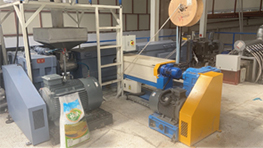 |
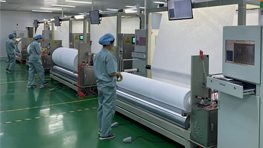 |
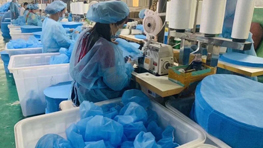 |
| Raw Material of Non-Woven Fabric | Fabric for Disposable Bouffant Cap | On the Production Line |
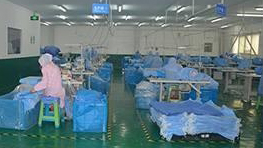 |
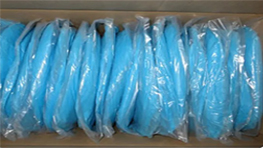 |
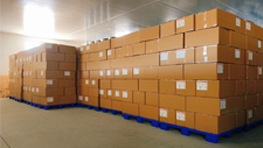 |
| Inspection Before Packing | Sealed Packaging |
Get Ready to Ship |
Q: How long should a drain tube be left in?
A: Your surgeon will usually remove the bulb when drainage is below 25 ml per day for two days in a row. On average, JP drains can continue to drain for 1 to 5 weeks. Keep a log and bring it to the clinic for discussion so your surgical team can determine the best time to remove the drain.
Q:What Should I Know About My Drains?
A: Emptying the drain and caring for your wound correctly helps you avoid infection and speeds healing. When the amount of drainage decreases to the level your doctor or nurse told you, your provider removes the drain.
These general instructions can get you started:
Empty the reservoir at least two times a day, even if it’s not full. You may need to empty it more than twice if it gets full.
Change the dressing around the wound at least once a day, or more often if it becomes soaked or dirty.
“Milk” the tubing every four hours while you are awake. This is also called “stripping” the tubing, and it prevents the drain from getting clogged.
Q:How Should I Empty My Surgical Drains?
A: Empty the reservoir bulb in the morning and evening, or if it gets full. First, gather all the supplies you need, including the measuring cup and chart you were given, along with a pen or pencil. Then follow these steps:
Wash your hands well in soapy water.
Open the plug on the reservoir without touching the inside of the plug.
Gently squeeze the reservoir to empty the fluid into the measuring cup.
Re-create the vacuum inside the reservoir by squeezing it flat and then replacing the plug.
Observe the amount of fluid and its color so you can write it down later. Then flush the fluid down the toilet.
Wash your hands again.
Record the amount of fluid for each drain on the chart. Remember to bring the chart with you to your first follow-up visit with your doctor.
Q:How Do I Keep the Tubing Open?
A:“Milking” or “stripping” the tubing can help prevent clots or other obstructions from clogging the tube. If you’re clearing obstructions that have already formed, you may have to repeat the process several times.
Follow these steps:
Wash your hands in soapy water.
Make sure the plug on the reservoir bulb is open, and then grip the tubing close to your skin.
With your other hand, squeeze the tube and run your fingers toward the reservoir bulb.
Release your fingers from the tubing near your skin first and then at the end, near the bulb.
Putting lotion or liquid hand cleaner on your hands after washing them can help your fingers slide along the tubing.
Q: How Should I Change the Wound Dressing?
A: If your wound doesn’t have a dressing, make sure to keep the wound and surrounding skin clean and dry. If you do have a dressing, it needs to be changed carefully to avoid infection. Follow these steps:
Wash your hands carefully in soapy water.
Gather your supplies. You need gauze pads, medical tape and a trash bag to dispose of your old dressing. If your wound is out of your range of vision, you also need a mirror.
Remove the old dressing carefully and put it in the trash bag.
Wash your hands again.
Inspect the drain site. If you notice any redness, or if the drainage smells bad or is cloudy, pale yellow or yellow-green, call your provider.
Fold two new pieces of gauze in half and place them around each side of the tubing at the drain site.
Place a full piece of gauze over the first two.
Put two strips of medical tape over the gauze.
Q: When Should I Call My Doctor?
A: Pay attention to your drain and inspect your wound every time you change the dressing. Call your doctor if any of these things happen:
The tube falls out or the stitches that hold it in place get loose.
You can’t re-create a vacuum in the reservoir bulb.
Your skin becomes red or more tender or swollen near the tube.
The drainage fluid has a bad odor, is cloudy, pale yellow or yellow-green.
You have a temperature of 100.5 degrees F or higher.
Related Tags :